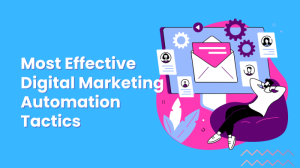
Step into the world of content marketing and advertising, where creativity meets strategy to captivate audiences and drive results. Get ready for an exciting journey filled with insights and inspiration!
In today’s digital landscape, the power of content in advertising has never been more crucial. Let’s explore how businesses leverage compelling content to engage consumers and achieve their marketing goals.
Content Marketing and Advertising
Content marketing is a strategic approach focused on creating and distributing valuable, relevant, and consistent content to attract and retain a clearly defined audience. This content is designed to drive profitable customer action and build brand loyalty over time.
Examples of Successful Content Marketing Campaigns
- The “Share a Coke” campaign by Coca-Cola, where personalized bottles with people’s names became a viral sensation.
- Dove’s “Real Beauty Sketches” video, which challenged perceptions of beauty and garnered millions of views online.
- Red Bull’s content around extreme sports and events, positioning the brand as synonymous with energy and adventure.
Importance of Content in Digital Advertising
Content plays a crucial role in digital advertising as it helps brands engage with their target audience in a meaningful way. Here are some key reasons why content is essential in digital advertising:
- Builds brand awareness and credibility by providing valuable information to consumers.
- Drives traffic to websites and social media channels through engaging content.
- Improves search engine optimization () by creating relevant and shareable content.
- Increases customer engagement and loyalty by delivering personalized and targeted messaging.
- Generates leads and conversions by guiding consumers through the buyer’s journey with compelling content.
Marketing E-commerce
E-commerce marketing refers to the strategies and techniques used to promote products or services online and drive sales through electronic transactions on the internet.Traditional marketing involves reaching out to customers through physical channels such as television, radio, print ads, and direct mail, while e-commerce marketing focuses on digital platforms like websites, social media, email, and search engines.
Strategies for Effective E-commerce Marketing
- Search Engine Optimization (): Optimize your website content to rank higher in search engine results, driving organic traffic to your online store.
- Pay-Per-Click Advertising (PPC): Run targeted ads on search engines and social media platforms to reach potential customers based on their interests and demographics.
- Social Media Marketing: Utilize platforms like Facebook, Instagram, and Twitter to engage with your audience, build brand awareness, and drive traffic to your e-commerce site.
- Content Marketing: Create valuable and relevant content such as blog posts, videos, and infographics to attract and retain customers, positioning your brand as an industry expert.
- Email Marketing: Send personalized and targeted emails to nurture leads, promote new products, and encourage repeat purchases from existing customers.
- Conversion Rate Optimization (CRO): Analyze user behavior on your website and make data-driven changes to improve the conversion rate, turning visitors into customers.
- Mobile Optimization: Ensure your e-commerce site is mobile-friendly and provides a seamless shopping experience across devices, catering to the increasing number of mobile shoppers.
Advertising

Advertising plays a crucial role in promoting products or services to a target audience. It is a subset of marketing, focusing on creating and delivering messages to generate sales and build brand awareness.
Differentiate between advertising and marketing
Advertising is a component of marketing that involves paid communication through various channels to promote products or services. On the other hand, marketing is a broader concept that encompasses various activities such as market research, product development, pricing, distribution, and advertising to meet customer needs and achieve business goals.
Various advertising channels used in digital marketing
- Social Media Advertising: Platforms like Facebook, Instagram, Twitter, and LinkedIn offer targeted advertising options to reach specific demographics.
- Search Engine Marketing (SEM): Utilizing search engines like Google or Bing to display ads to users searching for relevant s.
- Display Advertising: Banner ads, pop-ups, and other visual ads placed on websites and apps to reach a wider audience.
- Video Advertising: Pre-roll, mid-roll, or post-roll video ads on platforms like YouTube or streaming services.
- Native Advertising: Ads that blend seamlessly with the content on websites or social platforms to provide a non-disruptive user experience.
Role of advertising in promoting brand awareness
Advertising plays a significant role in creating brand awareness by increasing visibility, credibility, and recognition among the target audience. Consistent advertising efforts help establish brand identity, differentiate from competitors, and build a loyal customer base.
Affiliate Marketing
Affiliate marketing is a performance-based marketing strategy where businesses reward affiliates for driving traffic or sales to their website through the affiliate’s marketing efforts. It is a popular way for companies to increase sales and brand awareness without having to invest heavily in traditional advertising.
How Affiliate Marketing Works
Affiliate marketing works by having three key players in the ecosystem: the merchant, the affiliate, and the consumer. The merchant is the company that sells a product or service, the affiliate is the individual or business that promotes the merchant’s products, and the consumer is the person who makes a purchase through the affiliate’s unique link.
- The merchant provides the affiliate with a unique tracking link that the affiliate uses to promote the products or services.
- When a consumer clicks on the affiliate’s link and makes a purchase, the affiliate earns a commission from the merchant.
- Affiliates can promote products through various channels such as websites, social media, email marketing, or paid advertising.
- Affiliate marketing is a win-win situation for both the merchant and the affiliate, as the merchant only pays for actual sales or leads generated, and the affiliate has the potential to earn passive income.
Key Players in Affiliate Marketing Ecosystem
- Merchants: Companies or brands that sell products or services and want to increase sales through affiliate marketing.
- Affiliates: Individuals or businesses that promote the merchant’s products in exchange for a commission.
- Consumers: The end-users who make purchases through the affiliate’s unique link.
- Affiliate Networks: Platforms that connect merchants with affiliates and manage tracking, reporting, and payments.
Tips for Starting an Affiliate Marketing Program
- Define clear goals and objectives for your affiliate program to attract the right affiliates.
- Offer competitive commission rates to incentivize affiliates to promote your products.
- Provide affiliates with marketing materials, such as banners, text links, and product images, to make it easier for them to promote your products.
- Track and analyze the performance of your affiliates to optimize your program and maximize results.
Branding
Branding is the process of creating a unique and memorable identity for a product or service in the minds of consumers. It involves consistent messaging, design elements, and customer experience to differentiate a brand from its competitors.
Importance of Branding in Marketing
Branding plays a crucial role in marketing as it helps to establish a strong emotional connection with customers, build trust, and differentiate a brand in a crowded marketplace.
- Branding helps in creating brand recognition and awareness, making it easier for customers to identify and choose a brand over others.
- A strong brand can command premium pricing and customer loyalty, leading to repeat purchases and advocacy.
- Branding sets expectations for customers, influencing their perceptions and overall experience with the brand.
Building Customer Loyalty through Branding
Brand loyalty is the result of consistent positive experiences with a brand, which leads to repeat business and advocacy. Effective branding strategies can foster customer loyalty in the following ways:
- Delivering on brand promises consistently to build trust and credibility.
- Engaging with customers through storytelling and emotional connections to create a bond.
- Providing exceptional customer service to enhance the overall brand experience.
Examples of Successful Branding Strategies
Several brands have successfully implemented branding strategies to stand out in the market and build strong customer loyalty. Some examples include:
- Apple: Known for its sleek design, user-friendly interfaces, and innovative products, Apple has built a loyal customer base that eagerly anticipates new releases.
- Nike: Through its iconic “Just Do It” slogan and endorsement by athletes, Nike has established itself as a leading sports brand with a strong emotional appeal.
- Coca-Cola: With its timeless logo, consistent messaging, and memorable advertising campaigns, Coca-Cola has become synonymous with happiness and refreshment.
Direct Marketing
Direct marketing is a form of advertising where businesses communicate directly with a target audience to promote products or services. This type of marketing allows companies to reach potential customers in a personalized and targeted way, often using methods such as email marketing, direct mail, telemarketing, and social media advertising.
Examples of Direct Marketing Techniques
- Direct Mail: Sending physical mail, such as postcards or catalogs, to a targeted list of potential customers.
- Email Marketing: Sending promotional emails to a list of subscribers who have opted in to receive communications from the company.
- Telemarketing: Making phone calls to potential customers to promote products or services.
- Social Media Advertising: Targeting specific demographics or interests on platforms like Facebook or Instagram with sponsored posts or ads.
Benefits and Challenges of Direct Marketing
Direct marketing offers several benefits, such as:
- Targeted Communication: Allows businesses to reach specific audiences with personalized messages.
- Measurable Results: Provides the ability to track responses and conversions to evaluate the effectiveness of campaigns.
- Cost-Effective: Can be a more affordable option compared to traditional advertising methods.
However, direct marketing also comes with its challenges, including:
- Privacy Concerns: Some customers may perceive direct marketing as intrusive or spammy, leading to a negative brand image.
- Saturation: With the rise of digital marketing, consumers are bombarded with various messages, making it harder to stand out.
- Data Management: Maintaining accurate customer data and complying with privacy regulations can be complex and time-consuming.
Internet Marketing
Internet marketing refers to the promotion of products or services using the internet as a medium. This includes various strategies such as email marketing, social media marketing, search engine optimization (), and online advertising. The scope of internet marketing is vast, allowing businesses to reach a global audience and target specific demographics with precision.
Comparison with Traditional Marketing
Traditional marketing methods involve print, television, radio, and direct mail advertising, which have a limited reach and are often more costly. In contrast, internet marketing is more cost-effective, measurable, and offers greater flexibility in targeting the desired audience. The ability to track and analyze data in real-time allows businesses to make informed decisions and optimize their marketing strategies for better results.
- Internet marketing allows for targeted advertising based on user behavior and interests, whereas traditional marketing may reach a broader but less targeted audience.
- Measuring the effectiveness of internet marketing campaigns is easier through analytics tools, providing insights into customer behavior and preferences.
- Internet marketing offers interactive communication channels like social media and email, enabling direct engagement with customers, unlike traditional marketing methods that are more one-way communication.
Trends in Internet Marketing Practices
- Personalized Marketing: Tailoring content and offers to individual preferences and behavior through data analysis and automation.
- Voice Search Optimization: With the rise of voice assistants like Siri and Alexa, optimizing content for voice search has become crucial for better visibility.
- Video Marketing: The popularity of video content continues to grow, with more businesses incorporating video into their marketing strategies for higher engagement.
- Artificial Intelligence: AI technologies are being used to enhance customer experience, improve targeting, and automate various marketing tasks for efficiency.
- Influencer Marketing: Collaborating with influencers to promote products or services to their followers has become a popular trend for reaching a wider audience.
Mailing Lists
In the world of marketing, mailing lists play a crucial role in connecting businesses with their target audience. By collecting email addresses from interested individuals, companies can effectively reach out to potential customers and keep them informed about products, services, promotions, and more.
Significance of Mailing Lists
Building and maintaining mailing lists is essential for any successful marketing strategy. Here are some best practices to consider:
- Provide Value: Offer something of value, such as exclusive discounts, informative content, or free resources, to encourage people to sign up for your mailing list.
- Opt-In Process: Always use a double opt-in process to ensure that subscribers have actively chosen to receive emails from you, reducing the likelihood of spam complaints.
- Segmentation: Segment your mailing list based on demographics, behavior, or preferences to send targeted and personalized content that resonates with different groups of subscribers.
- Consistent Communication: Maintain regular communication with your subscribers to keep them engaged and build a relationship with them over time.
Role of Mailing Lists in Email Marketing Campaigns
Mailing lists serve as the foundation for successful email marketing campaigns. Here’s how they contribute to the effectiveness of your campaigns:
- Targeted Reach: With a well-segmented mailing list, you can send relevant and personalized emails to specific groups of subscribers, increasing the chances of conversion.
- Increased Engagement: Subscribers who have opted in to receive emails from your brand are more likely to engage with your content, leading to higher open rates, click-through rates, and conversions.
- Lead Nurturing: Mailing lists allow you to nurture leads over time by sending them valuable information, updates, and offers, guiding them through the sales funnel until they are ready to make a purchase.
- Measurable Results: By tracking metrics such as open rates, click-through rates, and conversion rates, you can analyze the performance of your email campaigns and make data-driven decisions to optimize future campaigns.
Outcome Summary

As we wrap up our exploration of content marketing and advertising, remember that the key to success lies in crafting authentic and compelling strategies that resonate with your target audience. Stay creative, stay innovative, and watch your campaigns soar to new heights!
Top FAQs
What sets content marketing apart from traditional advertising?
Content marketing focuses on creating valuable, relevant content to attract and retain a specific audience, while traditional advertising often interrupts viewers with promotional messages.
How can businesses measure the success of their content marketing campaigns?
Key metrics for measuring content marketing success include engagement rates, conversions, website traffic, and brand visibility.
What role does storytelling play in effective content marketing?
Storytelling is essential in content marketing as it helps businesses connect emotionally with their audience, making the content more memorable and impactful.





